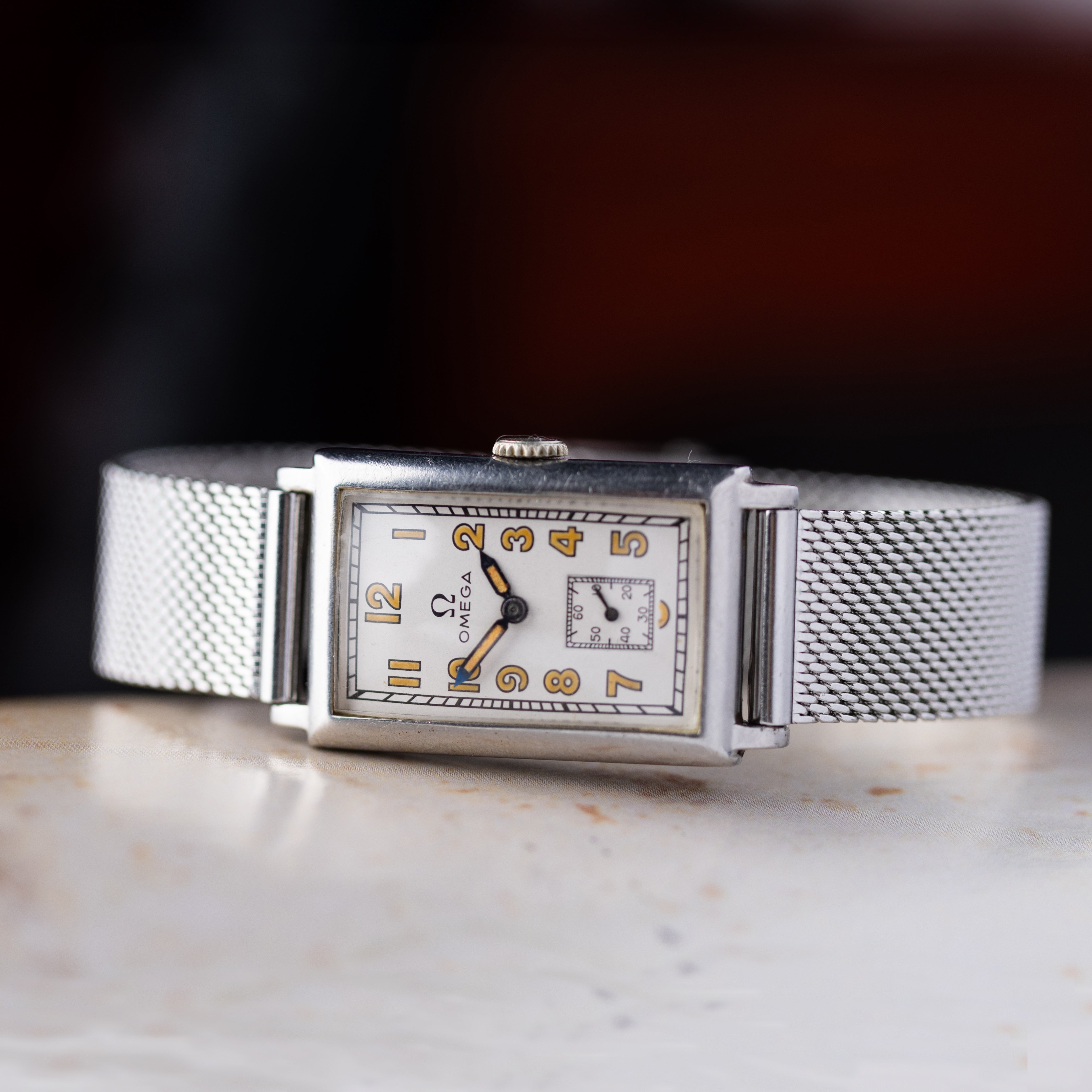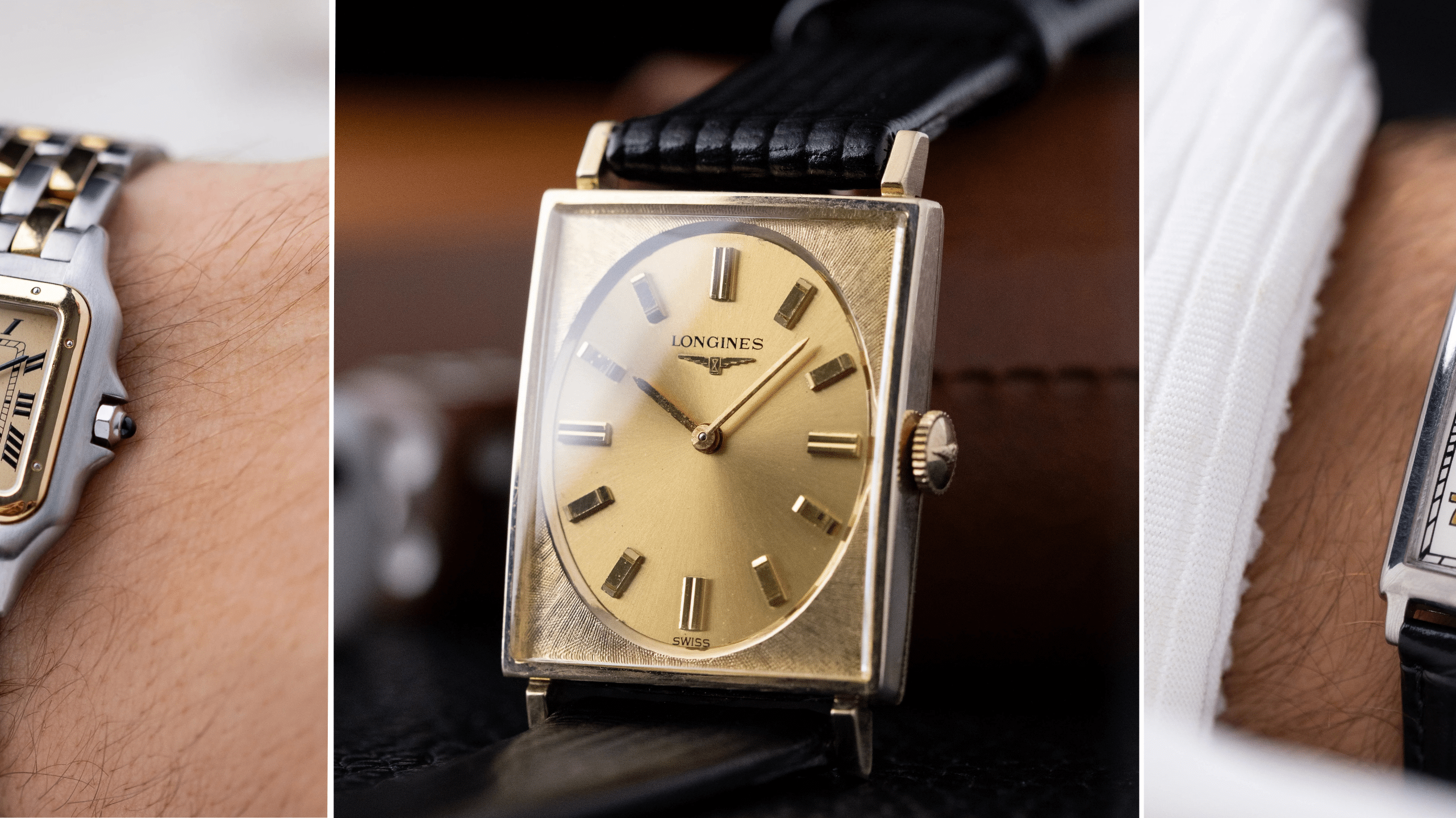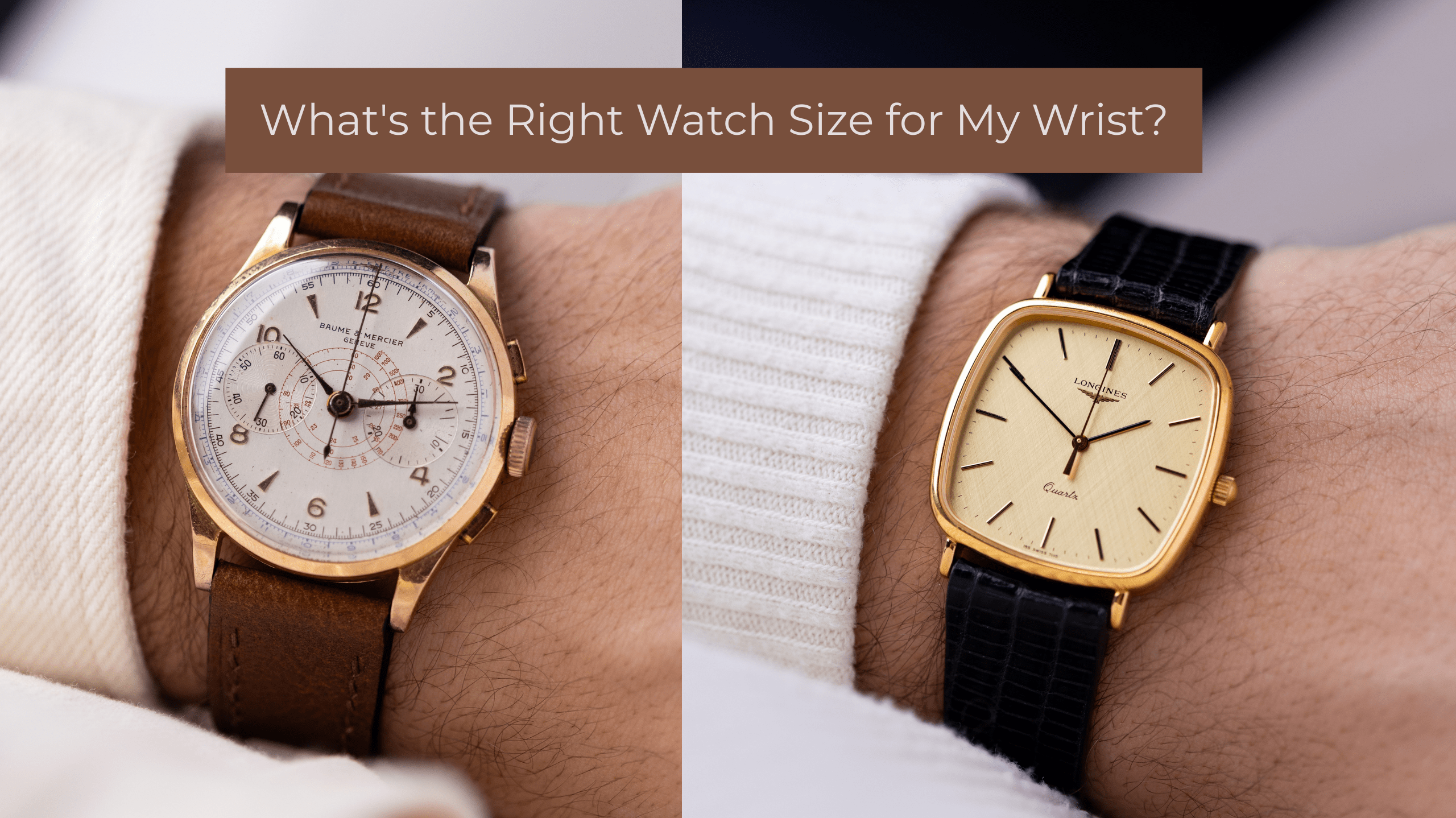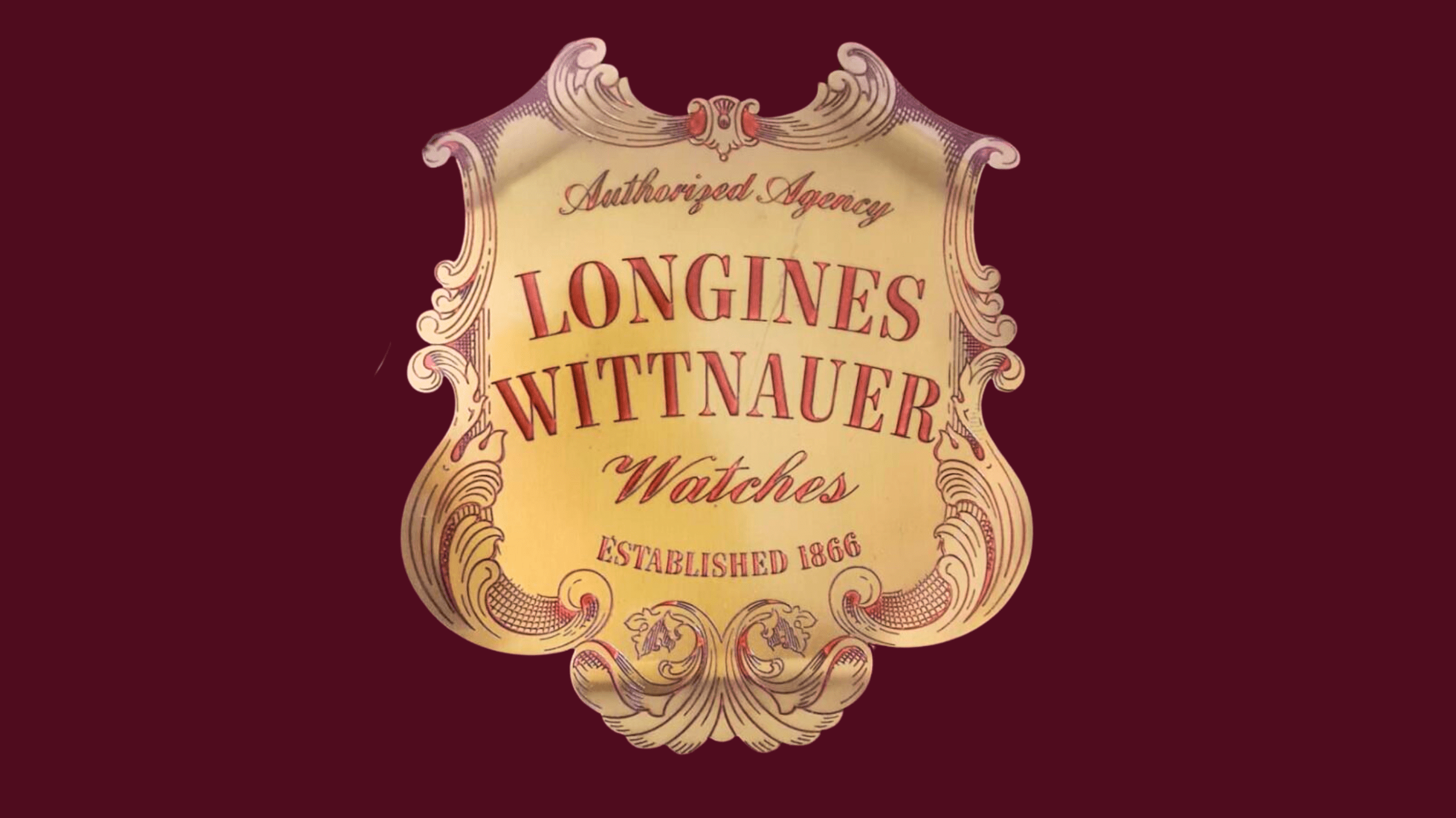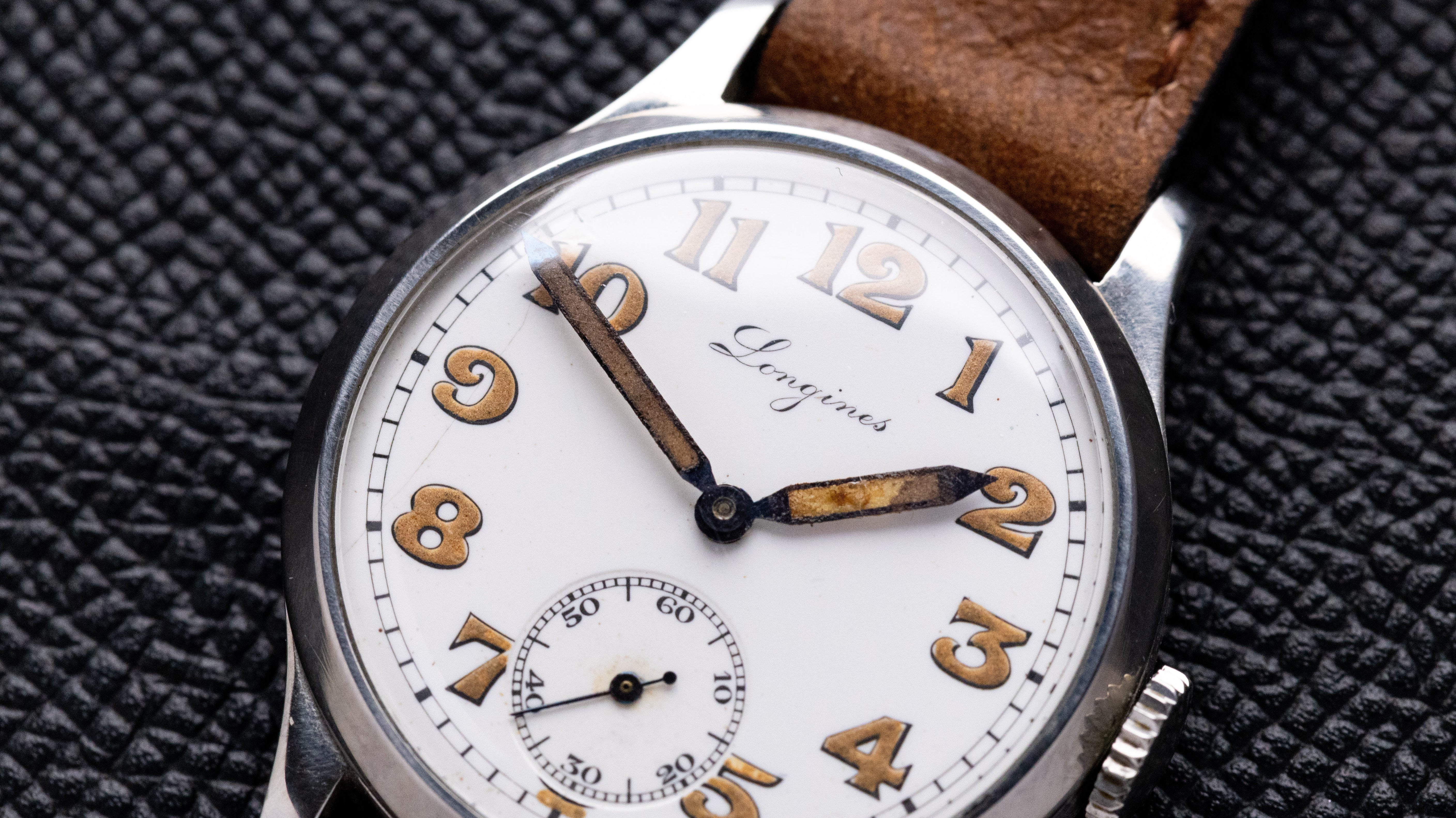If you’ve spent any time browsing vintage watches, especially vintage Swiss watches, you’ve probably stumbled across listings filled with words like gold, gold-plated, gold-filled, or even gold-capped. They sound similar, right? But when it comes to craftsmanship, value, and long-term wear, those little distinctions matter a lot — especially if you’re exploring men’s vintage watches, women’s vintage watches, or just building a collection of vintage watches.

Let’s clear things up, one layer at a time.
Solid Gold Watches: The Real Deal
Let’s begin with the purest kind — solid gold watches. These are made entirely from gold alloy rather than being just coated. You’ll rarely find 24k gold because it’s too soft; most gold watches are 14k or 18k, giving that ideal mix of strength and shine.

Vintage Omega Tank, Luxury Solid 14K Gold Case, Cal. 625, Ref. DD6850 from 1975
This vintage Omega is a clean, refined and luxury dress piece that offers the elegance of a solid 14K gold case in a compact tank-style form. The vertically brushed gold dial paired with thin baton hour markers gives it an understated, timeless charm..
$3,300.00
See More
They’re unmistakably weighty — in feel and price — and that’s part of the charm. The best part? Many vintage Swiss watches in solid gold age beautifully, developing a warm patina that makes each piece feel alive. Classic examples include 1950s Omega Constellations or early Rolex Datejusts, icons in both men’s vintage watches and women’s vintage watches depending on size and style.
From a watch investment angle, solid gold always sits at the top of the pyramid. You’re buying both artistry and actual precious metal — a combination that never really goes out of style.
Gold-Plated Watches: The Look Without the Weight
Then come gold-plated watches — the entry point into the golden look. These pieces start with a steel or brass base coated in a thin layer of gold, often through electroplating. The thickness? Usually just a few microns.
The result looks luxurious at first glance, but here’s the catch: plating wears off. The more a gold-plated watch is polished or bumped, the quicker that gold layer disappears. Once it’s gone, you can’t restore it without re-plating. That’s why collectors of vintage watches tend to favor well-preserved examples.

Vintage Universal Genève Gilt Shadow Automatic, Swiss Watch, Gold-plated C-Shape Case, Cal. 2-66 from 1970’s
This vintage Universal Genève Gilt Shadow Automatic from the 1970s is a true expression of era-defining elegance. Housed in a C-shape case—a bold and fluid design that became iconic in the decade—it features a brushed gold-plated finish paired with its original gold mesh bracelet for a sleek, integrated look on the wrist.
$3,600.00
See More
Still, for those who want the classic golden hue without breaking the bank, a gold-plated watch from Tissot, Citizen, or Seiko can deliver timeless style at a friendly price.
Gold-Filled Watches: The Sturdy Middle Ground
Now, gold-filled watches sit comfortably between plated and solid gold. They’re made by mechanically bonding a thick sheet of gold to a base metal — and legally, that gold must make up at least 5% of the watch’s total weight. That’s not decorative; that’s commitment.
These gold-filled vintage watches were especially popular in mid-century America, with brands like Hamilton, Bulova, and Elgin leading the charge. They hold up remarkably well over time — resisting wear far better than plating and often aging like true gold watches.

Vintage Longines Gold Medal, Swiss Made, Art Deco Tank, 10K Gold-filled case from 1960’s
This Longines Gold Medal Ref. 3007-528 is a striking and well-preserved example of 1970s dress watch design, housed in a sharp 10k gold-filled rectangular case and powered by a hand-wound Caliber 528 mechanical movement. With its rich gold-tone dial and raised hour markers, the watch balances vintage luxury with clean, geometric elegance.
$1,690.00
See MoreCollectors often call them the hidden gems of the vintage watch market — affordable, authentic, and built to last decades. From an everyday perspective, they’re arguably the most practical golden finish out there.
Gold-Capped Watches: The Quiet Sophisticate
And then there’s the subtle art of gold-capped watches. Instead of thin plating or bonded layers, these use a solid sheet of gold pressed over a steel case — like a golden shell hugging a durable core.
Omega, Longines, and Universal Genève mastered this technique during the golden era of vintage watches in the 1950s and 1960s. The gold layer is thick enough to polish, scratch-resistant, and visually indistinguishable from a full gold case at a glance.

Vintage Omega Constellation Ref. 168.005, Cal. 561, Gold Capped Case from 1966
This compact and classic Omega Constellation automatic chronometer has everything you want in a vintage dress watch: 34 mm gold-capped case, center seconds, an elegant silver sunburst dial, and the iconic “dog leg” lugs that define the reference 168.005. First released in 1952, the Constellation was Omega’s direct competitor to the Rolex Datejust—combining chronometer-grade accuracy with timeless design.
$2,900.00
See More
When it comes to watch investment, gold-capped watches offer an intriguing middle ground: real gold presence without the steep price tag of a solid gold model. Many collectors love them because they retain the prestige — minus the worry of soft, easily dented cases.
So, Which Gold Is Right for You?
Here’s the thing — it depends on your priorities.
-
Solid gold watches: for collectors and serious watch investment seekers.
-
Gold-filled watches: for long-term durability and vintage appeal.
-
Gold-capped watches: for that golden elegance without the fragility.
-
Gold-plated watches: for affordable vintage charm and occasional wear.
If you’re passionate about vintage watches, there’s beauty in all of them. A gold-capped Omega Seamaster from the 1960s or a gold-filled Hamilton from the 1950s might not make financial headlines, but they carry something rarer — history you can wear.
And remember, when you choose between different kinds of gold watches, you’re not just picking a metal — you’re choosing a story. One that shines, fades, and, if you’re lucky, becomes part of your own.
FAQ - Types of Gold Watches
What is the difference between solid gold and gold-plated watches?
Solid gold watches are made from 14k or 18k gold alloys and offer the highest durability, value, and long-term desirability — especially among collectors of vintage Swiss watches and vintage Omega watches. Gold-plated watches have a thin gold coating over steel or brass and are the least durable option, as the gold layer can wear off over time.
Are gold-filled watches good for everyday wear?
Yes. Gold-filled watches have a thick layer of bonded gold, making them far more durable than gold-plated watches. They’re an excellent choice for men’s vintage watches and women’s vintage watches because they resist wear and maintain their appearance for decades.
Do gold-capped watches look like solid gold?
Absolutely. Gold-capped watches use a substantial layer of solid gold pressed over a steel case, giving them the same visual appearance as solid gold models. Many vintage Omega watches from the 1950s and 1960s — including Seamasters and Constellations — were gold-capped.
Which type of gold watch is best for investment?
Solid gold watches offer the best long-term investment value due to their precious metal content and strong collector demand. Gold-filled and gold-capped watches also hold value well in the vintage watch market, while gold-plated watches are better suited for affordable, occasional wear.
Do gold-plated vintage watches wear out quickly?
They can. The gold layer on gold-plated watches is extremely thin (often just a few microns), which means it can fade or rub off with frequent use. Well-preserved examples, especially from brands like Tissot or Seiko, remain attractive options for budget-conscious collectors.
Are gold-capped watches more durable than gold-plated watches?
Yes. Gold-capped watches have a much thicker layer of gold, making them far more resistant to wear, scratches, and polishing. This is why many collectors prefer gold-capped models over gold-plated ones, particularly in vintage Swiss watches.
Which type of gold watch should beginners buy?
Beginners looking for quality and affordability should consider gold-filled or gold-capped watches. These offer excellent durability and vintage charm without the high price of solid gold. Gold-plated watches are the most budget-friendly option but are less durable.

